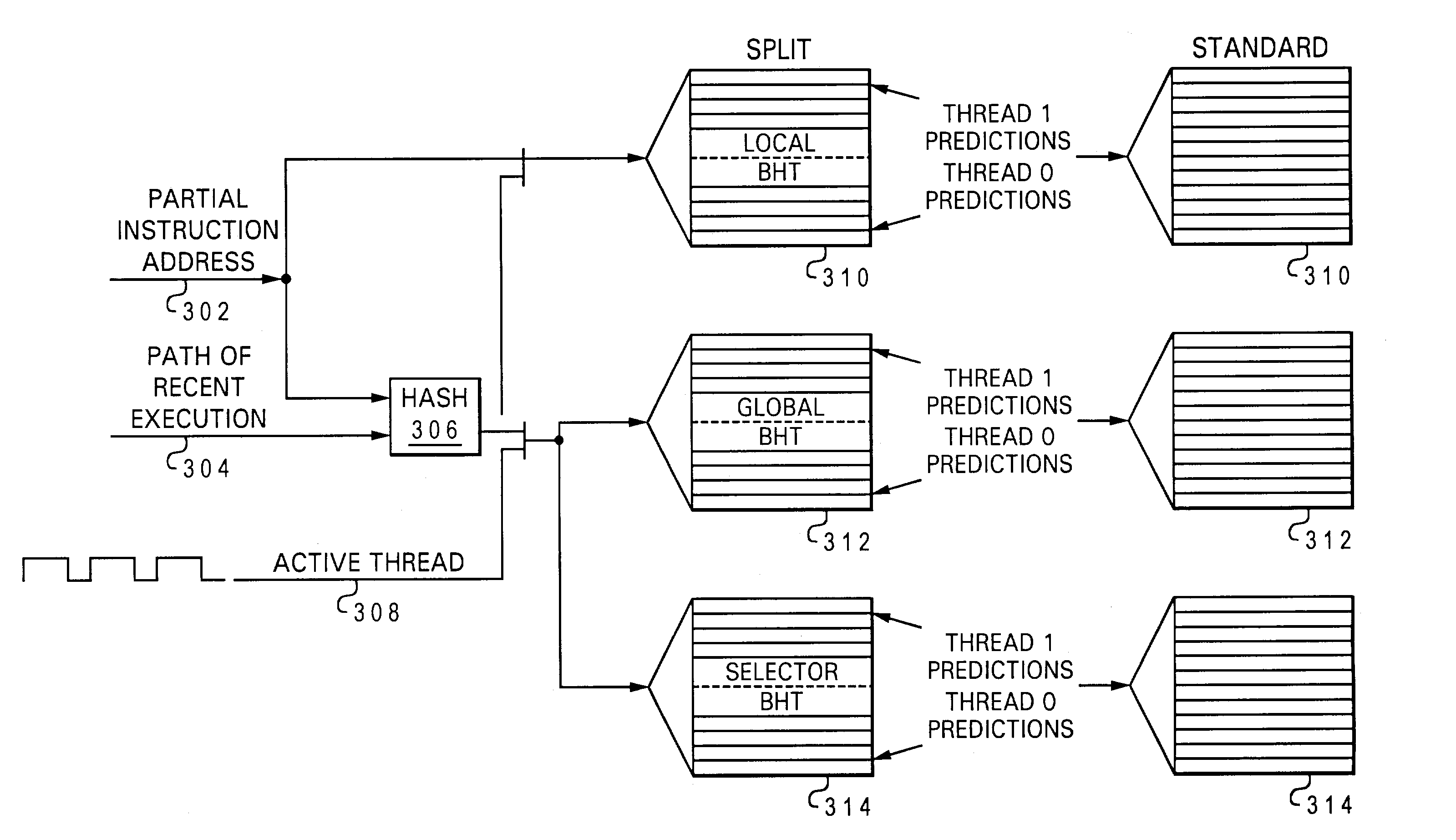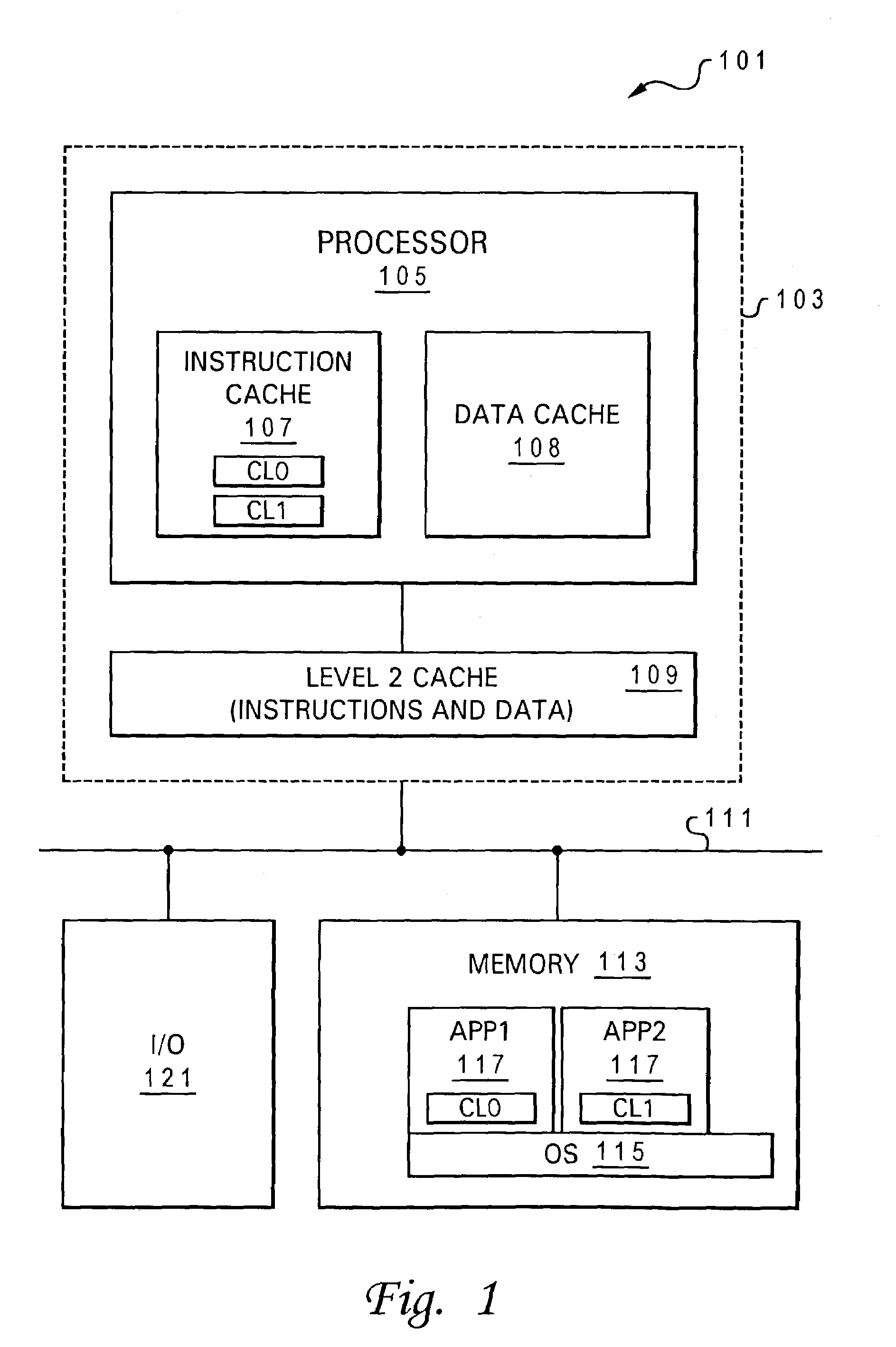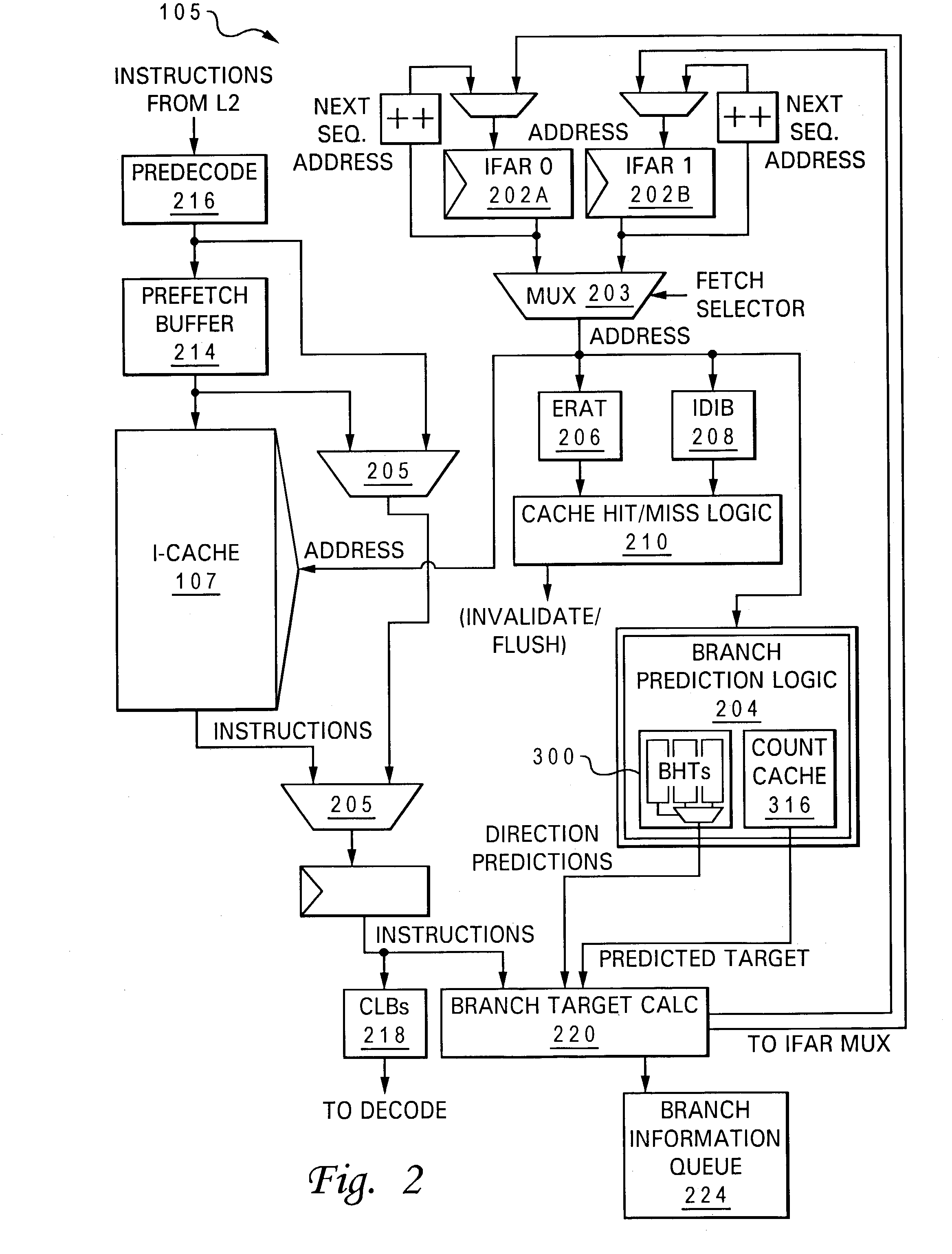Thread-specific branch prediction by logically splitting branch history tables and predicted target address cache in a simultaneous multithreading processing environment
a multi-threading processing environment and branch history technology, applied in the field of data processing, can solve the problems of branch prediction accuracy problems, bhts and count cache conflict, faulty predictions, etc., and achieve the effect of better branch prediction results
- Summary
- Abstract
- Description
- Claims
- Application Information
AI Technical Summary
Benefits of technology
Problems solved by technology
Method used
Image
Examples
Embodiment Construction
[0021]The present invention provides a method and system for enabling branch prediction logic to provide more accurate predictions when threads of different applications are running On the simultaneous multi-threading (SMT) processor. The invention provides logic for determining when the two threads running on the system are of different applications and would benefit from having separate BHTs and predicted target address cache (referred to hereinafter as a “count cache”) and, responsive to tat determination, the logic logically re-configures both the BHTs and the count cache in a split mode separating the prediction addresses of each thread.
[0022]The invention solves the problem of redundancy and collisions in the BHTs and count cache of a branch prediction mechanism during SMT when both threads are from different program code. Specifically, the invention addresses the problem of shared lower order bits of effective addresses for both threads that necessarily map to different real ...
PUM
 Login to View More
Login to View More Abstract
Description
Claims
Application Information
 Login to View More
Login to View More - R&D
- Intellectual Property
- Life Sciences
- Materials
- Tech Scout
- Unparalleled Data Quality
- Higher Quality Content
- 60% Fewer Hallucinations
Browse by: Latest US Patents, China's latest patents, Technical Efficacy Thesaurus, Application Domain, Technology Topic, Popular Technical Reports.
© 2025 PatSnap. All rights reserved.Legal|Privacy policy|Modern Slavery Act Transparency Statement|Sitemap|About US| Contact US: help@patsnap.com



